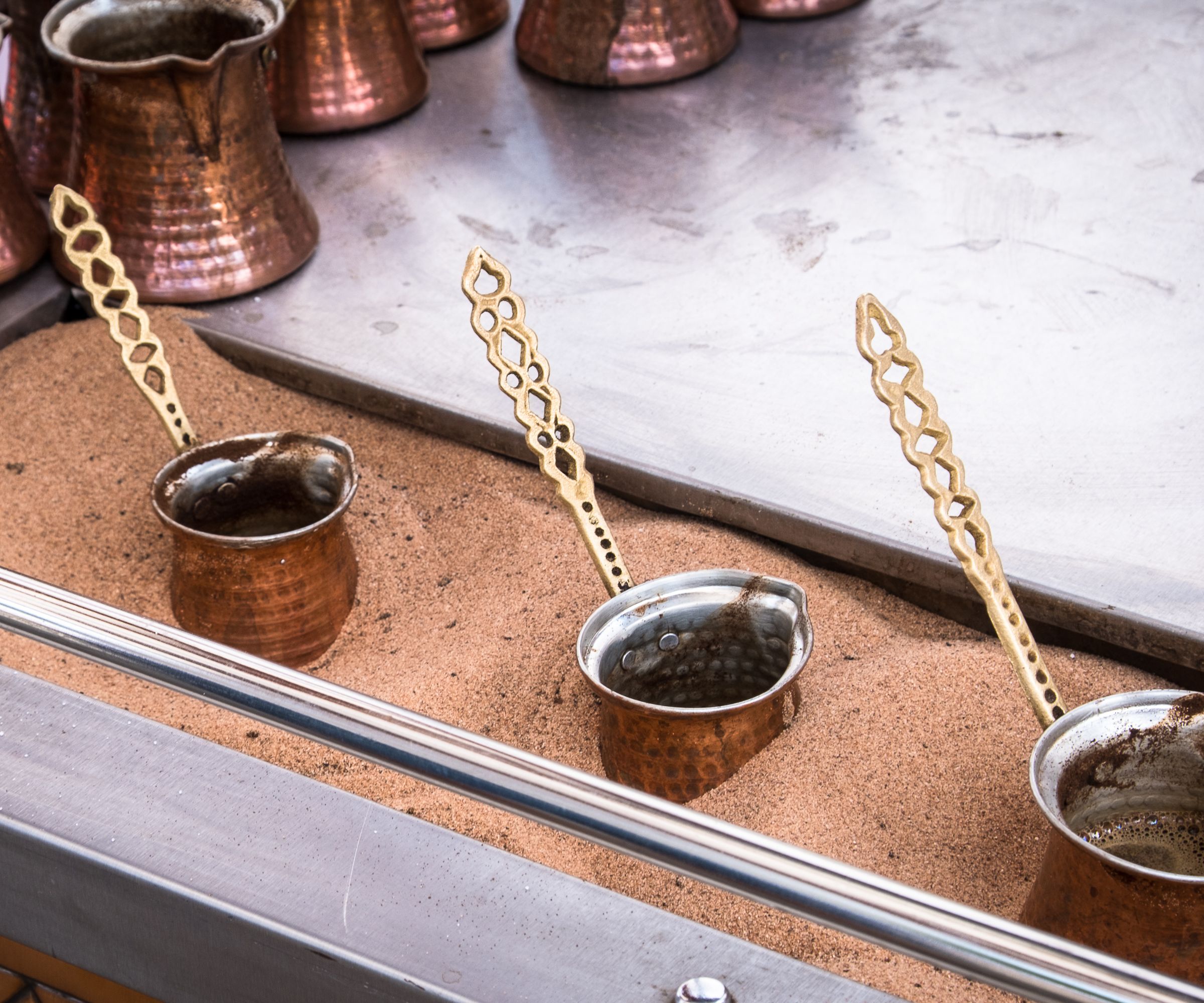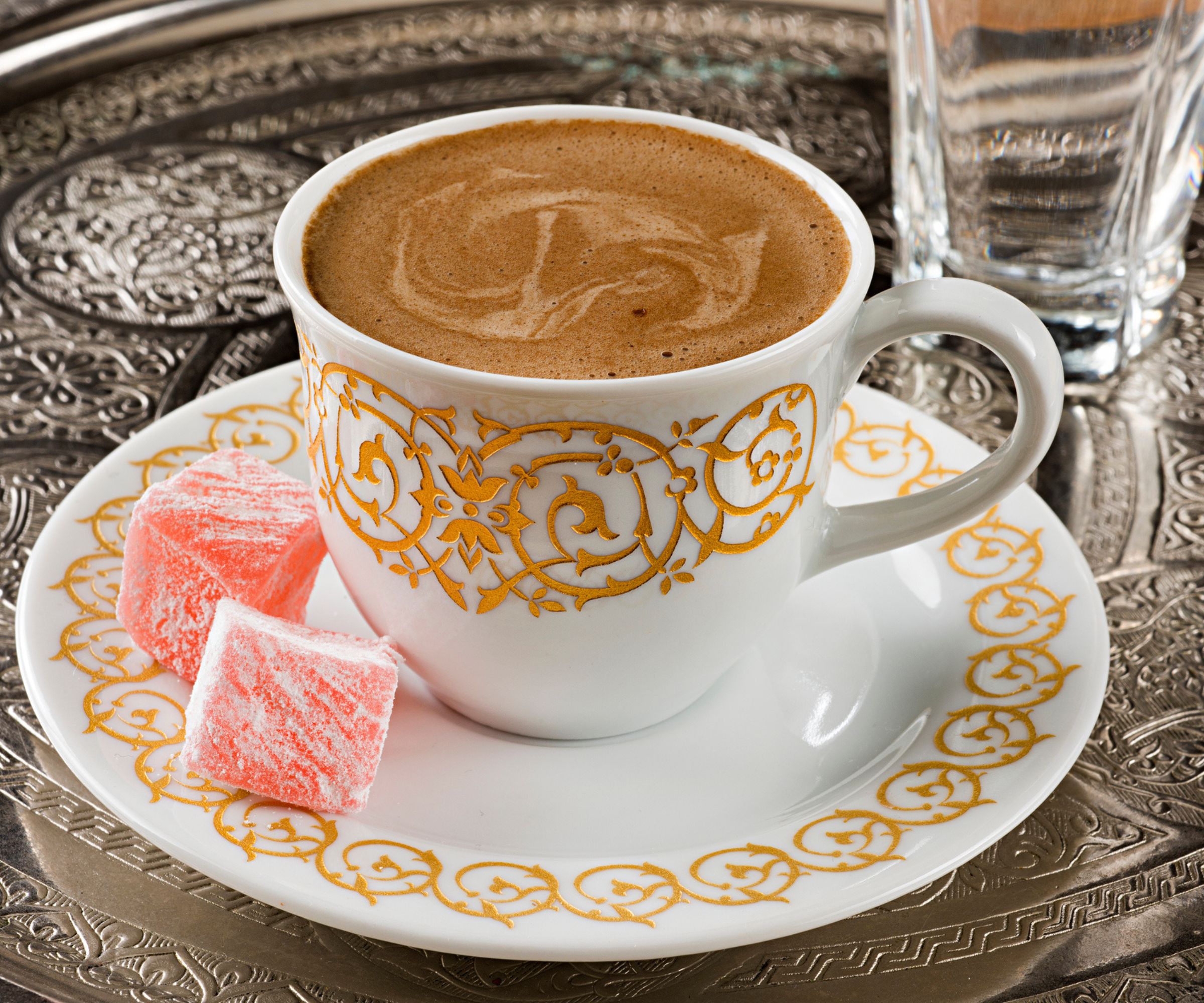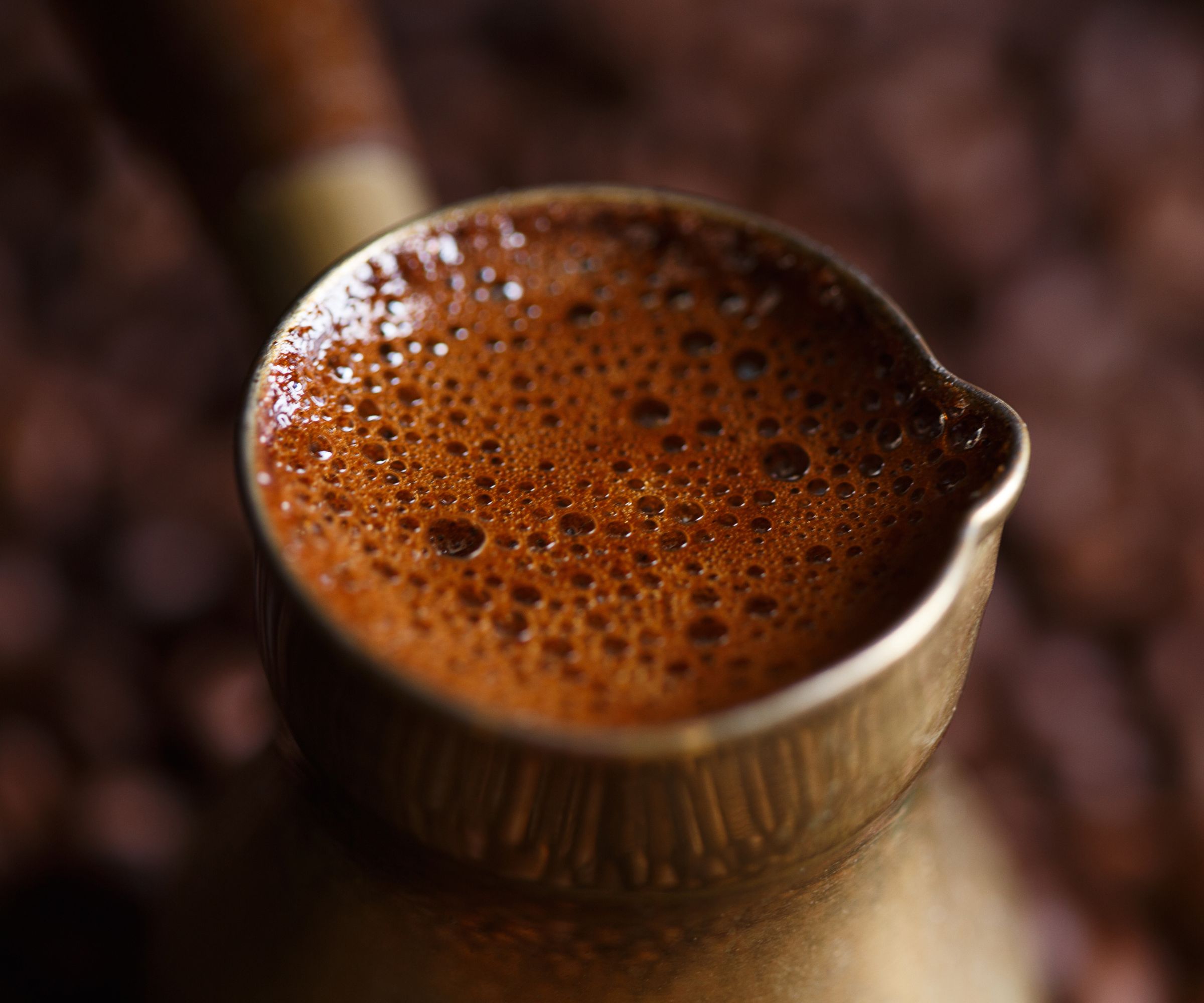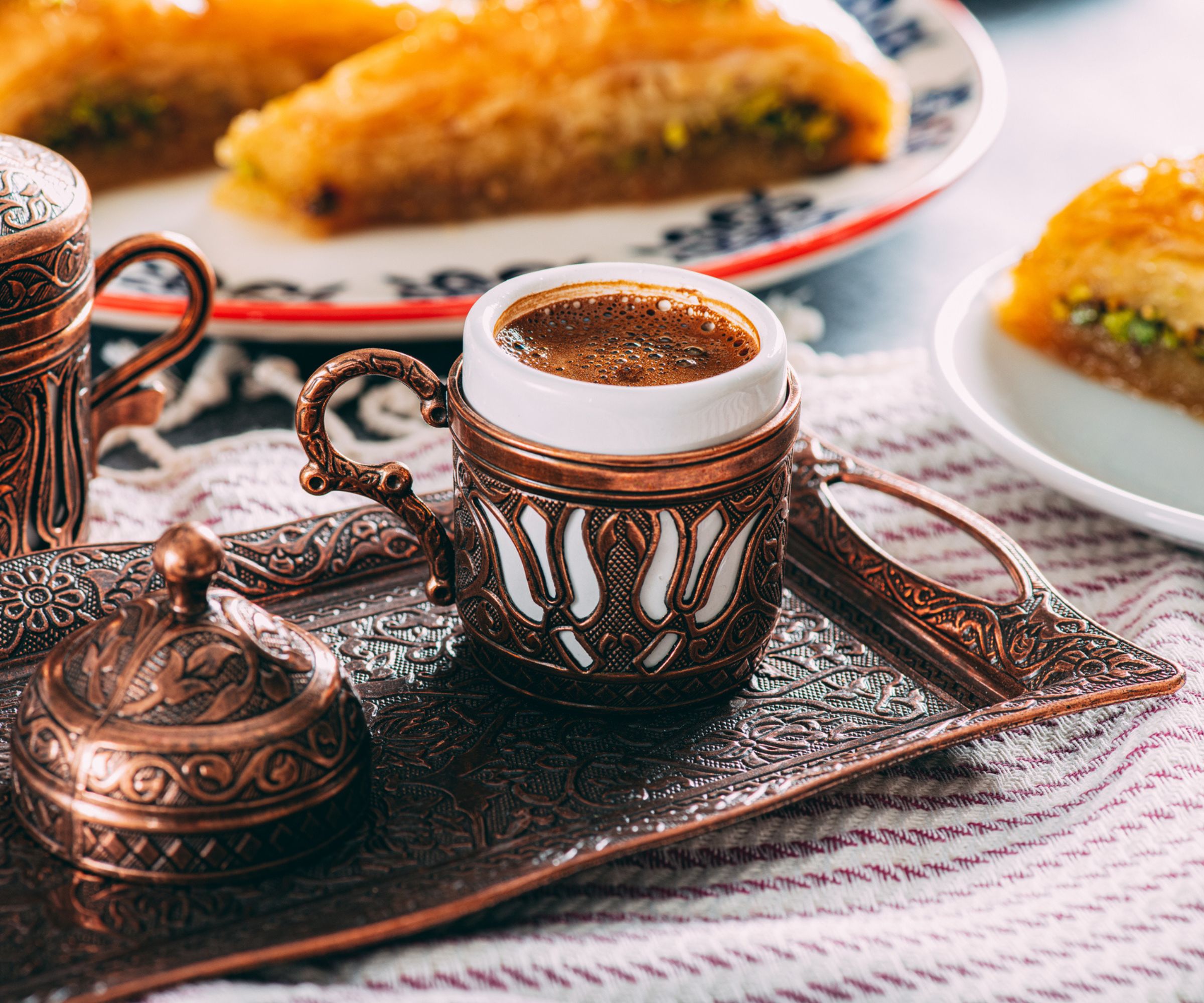
Turkish coffee has been made and drunk for centuries. The slow simmer makes a thick, rich, and delicious coffee that's traditionally drunk amongst friends.
Turkish coffee is quite different from the average American filter brew, but if you have one of the best French presses or one of the best moka pots, you're likely to enjoy Turkish coffee. It takes aspects of immersion and combines them with the froth you get when you make a dalgona coffee.
I spoke to baristas and experts to find out how to make the perfect Turkish coffee. They have tips for grind size, spices, as well as special sweet treats to serve alongside the coffee. If you want to impress your barista friends or host a coffee morning, this is a must-try.
What is Turkish coffee?

The idea of unfiltered coffee will send shivers up the spines of most coffee drinkers. However, Turkish coffee might change their minds. Rather than spend money on single-use filters, the coffee beans are ground to a superfine, powdery texture. They're so small that infuse seamlessly into the drink, making them indistinguishable from water.
This might sound like it's worlds away from our classic coffee shop coffee, but, as Lukas Van Vyve, founder of Emergent Brew, points out, this is probably the classic coffee. He says that 'the roots of coffee go back to the 16th century Ottoman Empire when it was brought in with travel merchants.'
Five hundred years ago, there weren't any coffee scales, just spoons. Therefore, when it comes to making Turkish coffee, the measurements are all approximate. There's something romantic and enticing about the idea that the perfect Turkish coffee relies on your intuition and instinct rather than strict measurements.
How do you make Turkish coffee?

Before getting started, you'll need some specialist equipment, namely a cezve, available on Amazon. This is a copper jug with an elongated handle. if you don't have a cezve, don't worry. A small, narrow saucepan, like this one from Amazon, will work just as well.
Once you've got your equipment ready pour 6 fl oz of cold, filtered water into the cezve. Add two tablespoons of your ground coffee and sugar (if you want to) into the pan. Give the water a mix until the sugar dissolves into the coffee and then stop stirring. Resist the urge to stir when the coffee is warming, because this will collapse the body of your coffee, making it taste ashy and bitter.
Place the cezve on the stove and turn the gas to medium. Within three minutes your coffee will start to rise and foam. Before it starts to boil, take the cezve off the heat and skim off the foam, distributing it evenly between four small cups.
Once you've taken the foam off the top, put your cezve back onto the heat and let it foam again. Just before it boils, take the coffee off the heat and pour it slowly into the serving cups so the foam rises to the lip. Wait for three minutes and then it is ready to serve. Three minutes is enough time for the grounds to settle and for your coffee to cool.
Turkish coffee essentials

If you're designing a coffee station and looking for your essentials, look no further. These were all recommended by baristas and Turkish coffee experts, so you know that they'll make the best coffee.
If you're deciding how many espresso cups to buy or how big your cezve should be, I would recommend going for more rather than less. Turkish coffee tastes better when it's had longer to heat up. When you're filling your cezve with six cups worth of coffee, the process is naturally slowed down, so making enough for friends to have a cup is always a plus, not just because it's nice to drink in good company.
This handcrafted copper pot is an authentic cezve. It's available in a range of sizes from 5 oz to 13.2 oz, so no matter how many people you're catering to, there's a pot that's big enough.
If using your stovetop sounds a little too fussy for you, you can find electric Turkish coffee makers like this that quickly heat your coffee.
Hand coffee grinders need more work than automatic grinders, but this is the only way to achieve a grind fine enough for Turkish coffee at home. This is easy to hold and extremely consistent.
Expert tips and tricks

Turkish coffee – unsurprisingly – really suits Turkish-style beans. Traditionally, dark Arabica beans are the best ones to use and I would recommend looking for dark, plummy notes. The most popular brand, which every barista recommended to me, is Kurukahveci Mehmet Efendi coffee. If everyone loves it, they have to be doing something right.
Grind size makes the difference between superb and sub-standard coffee. Even if you own a good coffee grinder, the finest setting is probably too coarse. Oli Base a barista at Drinky Coffee, says that 'the grinds should be so fine that they're impossible to pick up, like flour. You either need a commercial-grade espresso grinder or a stepless hand grinder like the 1Zpresso X Pro. This is essentially a pepper mill, but it can grind to a really fine degree. It takes a lot of work, but it's worth it for the authentic Turkish coffee.' If you don't like this idea, your local coffee shop might make a Turkish grind that will save you all the effort (but it will probably cost more in the longer term).
You can adjust how much coffee you add depending on your taste preferences. The same applies to sugar. You can drink your coffee az şekerli (with half a teaspoon of sugar per cup), orta şekerli (with one teaspoon of sugar per cup), or şekerli (with two teaspoons per cup). I would recommend starting without the sugar because Turkish coffee is often served with a sweet treat. You can always retrospectively add sugar to your coffee later.
Some people add green cardamom pods instead of sugar for a more spiced aroma. Or, instead of water, they heat up milk with the coffee grounds. This naturally softens and sweetens the coffee flavors. If you do use milk, make sure you don't burn it, because this will ruin your coffee.

If you order coffee in a traditional Turkish café, you'll probably be offered a glass of water. The water acts as a palette cleanser to balance out the intensity of your coffee. Turkish coffee is like a thick espresso, so watering it down is no bad thing.
The sweet treats, in other words, my favorite part, are a must-have with your coffee. Turkish delight, like this from Walmart, as the name might suggest, is a national delicacy. Pairing the light, floral, fragrant notes of Turkish delights with the rich, intense drink is a match made in heaven. If you order Turkish coffee in Greece, where they call it 'domestic coffee', you'll be given a slice of homemade baklava, like this from Walmart. These sweet treats are a reason why it's best not to have sugar in your Turkish coffee: you'll enjoy the balance of bitter coffee and sweet treats.
Traditionally, Turkish coffee was warmed on the sand and some purists will still choose hot sand over a stove. However, not many in America have hot sand pits ready for Turkish coffee and the stove won't do a bad job.
FAQs
Is Turkish coffee stronger than espresso?
In both taste and caffeine, Turkish coffee is similar to espresso. Turkish coffee has a caffeine concentration of 30-32 mg per ounce and espresso has 30-35. The difference is slight and you probably wouldn't notice it.
Does Turkish coffee taste nice?
It's hard to give an objective answer, but I would say yes. Rather than using extraction, the immersion technique makes a bold cup of coffee full of body and flavor. It's not for the faint-hearted and if you normally drink filter coffee, it might come as a shock, but I really like it.
Can I make Turkish coffee at home?
Even if you don't have the specialist equipment, there are all sorts of tips and tricks you can use to make Turkish coffee at home. If you have a saucepan and espresso cups, you won't struggle. The hardest part of making Turkish coffee is finding a grind fine enough.
Is Turkish coffee healthier?
As an unfiltered coffee, some health experts have speculated that Turkish coffee might contain more bioactive compounds, such as chlorogenic acids, which are antioxidants and polyphenols. In short, they're good for your health. For some people, these compounds can help with blood sugar, cholesterol, and high blood pressure, but always speak with a specialist before making changes to your diet.
Final thoughts
Now you know about it, you'll see Turkish coffee everywhere. It's becoming an increasingly popular drink and there's every reason why. It's rich, creamy, and utterly delicious. If you can, I would recommend trying Turkish coffee in a café first. You'll see the full experience, from cups to sweet treats and then, when you're making it at home, you'll know what to aim for.
Turkish coffee is not for those who would shot an espresso on the go, because it's a slower process, designed for fika, social time. Next time you're hosting friends for a coffee morning, I'd recommend giving it a try.







